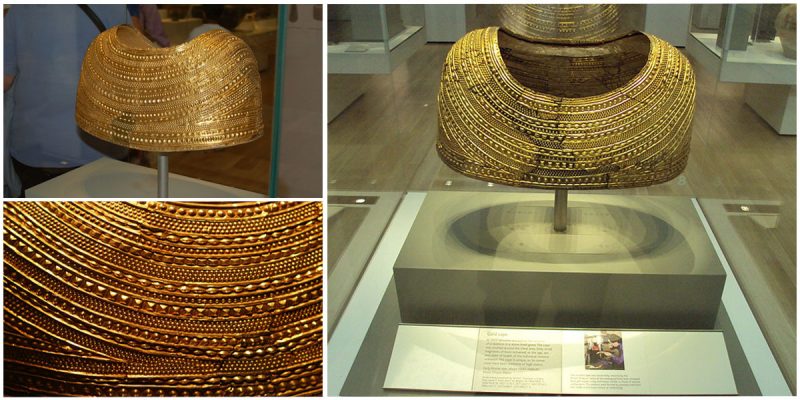The Mold Cape is among the most significant Bronze Age archaeological findings ever to come out of Wales. This stunning gold object, which remains unparalleled to this day, was found in 1833 by workmen quarrying for stone in an ancient burial mound in a field named Bryn yr Ellyllon (the Fairies’ or Goblins’ Hill), in Northeast Wales.
The discovery was brought to the attention of the wider antiquarian community largely through the efforts of the local vicar named Charles Butler Gough.
The gold cape had been placed on the body of a person who was interred in a rough cist (stone-lined grave) within a burial mound. Inside the mound, archaeologists also found the remains of woven textile; two gold ‘straps’; 16 fragments of sheet bronze; an urn with large quantities of burnt bone and ash; fragments of a second gold cape; a bronze knife; and the remains of hundreds of amber beads, which would have originally been on the cape.
However, many of the objects found in the grave have long disappeared.
The golden cape is oval in shape and was designed to cover the shoulders, upper arms, and upper chest. Based on the size of the cape, it is believed it was made to fit a slim woman or child. The skeleton was lost soon after it was found, so the gender cannot be confirmed.
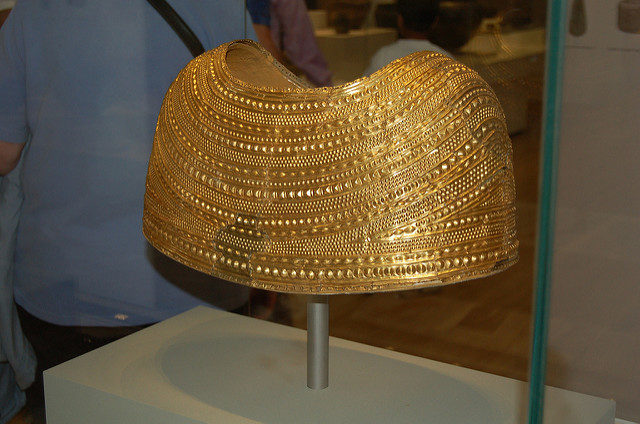


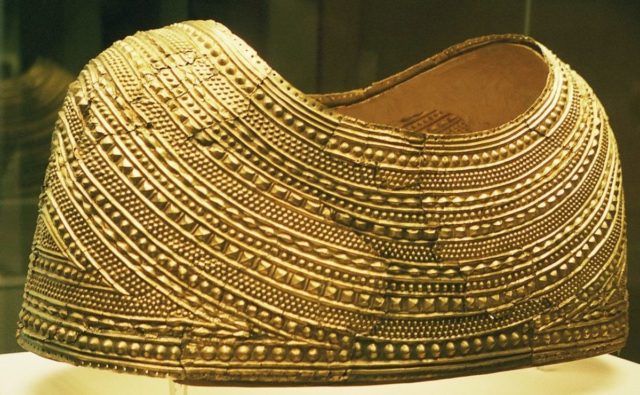
The cape was badly crushed and was further damaged as it was shared out between those that discovered it. It has been repaired using technology to replace the missing 15% of the metal.
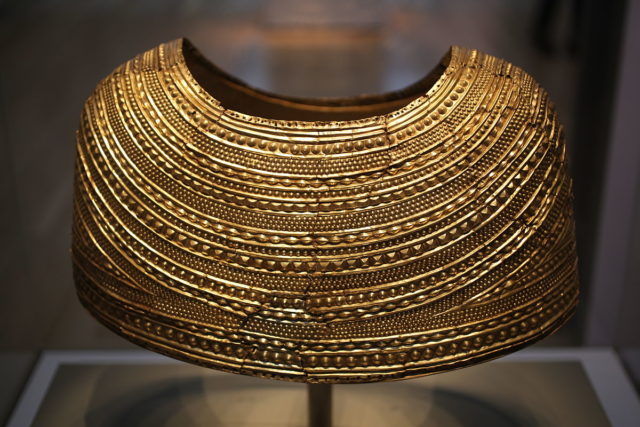
The unique form and design of the cape demonstrate highly advanced craftsmanship. Crafted from a single gold ingot beaten to a breathtakingly thin sheet, a task which would have taken considerable time and skill, it is a remarkable survival of ritual activities and provides a tangible insight into Bronze Age ceremonial practices.
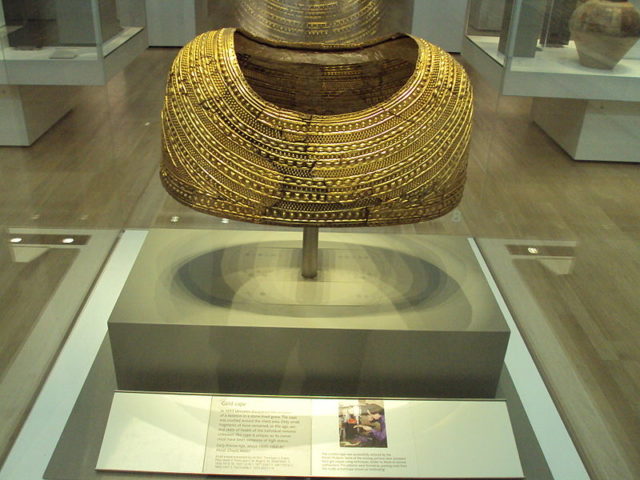
It is decorated with repoussé concentric rings of ribs and bosses, giving the impression of folded cloth. The bronze strips found with the cape may have served to strengthen the adornment further.

Around the neck and base are a line of perforations. There are three zones of decoration on the cape: a band running around the base, a curving panel which dips at the neck and rises over the shoulders, and two matching panels to fill in the upper arm area. Above the perforations at the base are two high ridges and a deep groove. Above the groove is a line of conical bosses which runs around the whole cape, but bifurcates at the front to rise up over the triangular panels at the upper arm.
Because there is nothing to compare it to in the whole of Europe, it makes it more difficult to understand why it was made and what significance it had.

With no national museum established in Wales at the time of the cape’s discovery, the British Museum, recognizing its importance and significance, devoted efforts in acquiring the cape, and a number of the accompanying fragments, for its collections.
While the original Cape resides in the British Museum, a replica can be seen in the heritage center situated above Mold Library.
